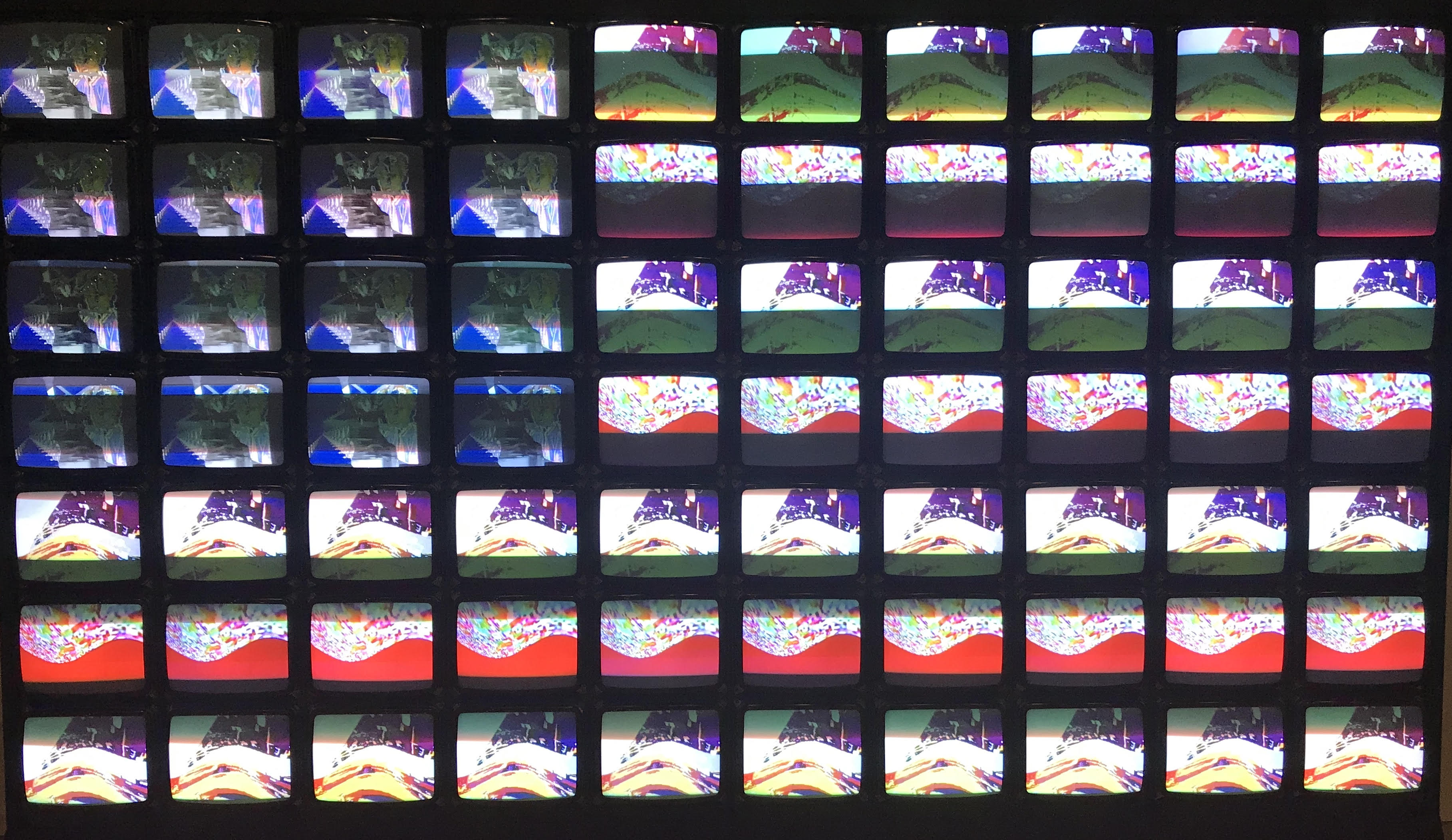
Technology is advancing so rapidly today it is difficult to consider technology-based artwork in its proper context. When Korean-American artist Nam June Paik created a series of works utilizing television sets, there were no smart phones. Paik died one year before the first iPhone was launched (2007). Video Cassette Recorders (VCR) did not become commercially popular until the early 1980s. At that time, my family’s rotary phone was still stuck to the wall, and we were still watching a black and white TV with bunny ears that picked up five network stations.
Flat screen technology was not commercially available until 1997, and the first videowall using multiple TV screens was not built until 1985 — when Paik began his TV series.
Paik was on the edge of technological advances. He not only utilized the technology but was an innovator in this space. As early as 1963 Paik was working with engineers to develop the video synthesizer, a key element in the work shown here, entitled Video Flag. Although immersed in the technology of the day, Paik was a devout Buddhist and never drank, smoked or drove a car. This particular piece uses 70 monitors that display rapidly moving red, white and blue images that form the stars and stripes of the American Flag. The work was intended to engage an otherwise passive viewer by embracing American pop culture and technology’s increasing role in shaping our lives.
His work was considered a part of a Neo-Dada art movement labeled Fluxus, which was greatly influenced by musician John Cage.
On a personal note, Paik’s work piggybacked on technological advances credited to one of my distant ancestors, John Logie Baird, a Scottish-born engineer. He was credited with demonstrating the first working television in 1926. He later conducted the first successful transatlantic TV transmission and developed the first purely electronic color television picture tube. Baird’s development of broadcasting and home entertainment technology has secured his place in TV history. He was listed as one of the 100 Greatest Britons and was inducted into the Scottish Science Hall of Fame in 2015.
